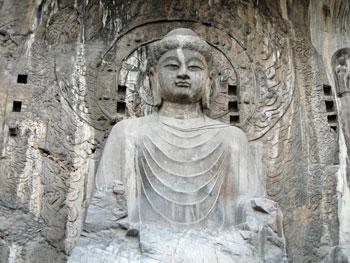A cooperative project to digitize China's world heritage site, the Longmen Grottoes, has been launched this week. The project is jointly sponsored by the Longmen Grottoes Academy and Peking University, and aims to provide a complete, precise and permanent digital database for these cultural relics.

The two sides signed a cooperative agreement on Friday in the city of Luoyang in central China's Henan Province where the Grottoes are located. The first stage of preparations began in October 2006. Since then, much work has been done, including mapping, recording, and compiling.
Li Renju, Info. & Tech College of Peking Univ., says, "after several years of research, we've worked out how to precisely map different Buddhist statues and carvings. From now on, we'll conduct comprehensive three-dimensional surveying and mapping of the entire Grottoes."
The whole project is expected to last for three to four years. During that time, all the statues and relics inside the Grottoes will be scanned and modelled.
After collecting the digital data from the site, a digital museum will be built to allow global visitors to experience virtual tours inside the Longmen grottoes.
Li Zhengang, head of Longmen Grottoes Academy, says, "through the digitalization, the research on Longmen Grottoes will be greatly upgraded from the traditional way to advanced scientific research. All the immovable cultural relics were digitalized into the computer so that experts can conduct research without coming to the site."
Spread over more than 2,300 grottoes, Longmen features outstanding Buddhist carving craftsmanship, with 110,000 Buddhist images, more than 70 dagobas and 2,800 inscribed tablets. They're located on cliffs one kilometer long stretching above the Yishui River, where Buddhism was first introduced to China during the Eastern Han Dynasty about 1900 years ago.
The Buddhist statues and carvings have survived floods, wars, theft and other natural or manmade disasters during the past millennium.
In recent years, the grottoes have been increasingly threatened by weathered caves, collapsing rocks and seeping groundwater.
(CCTV March 16, 2009)